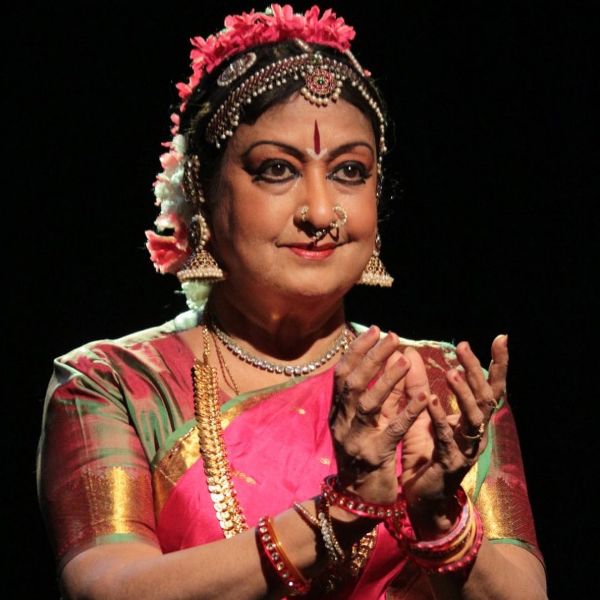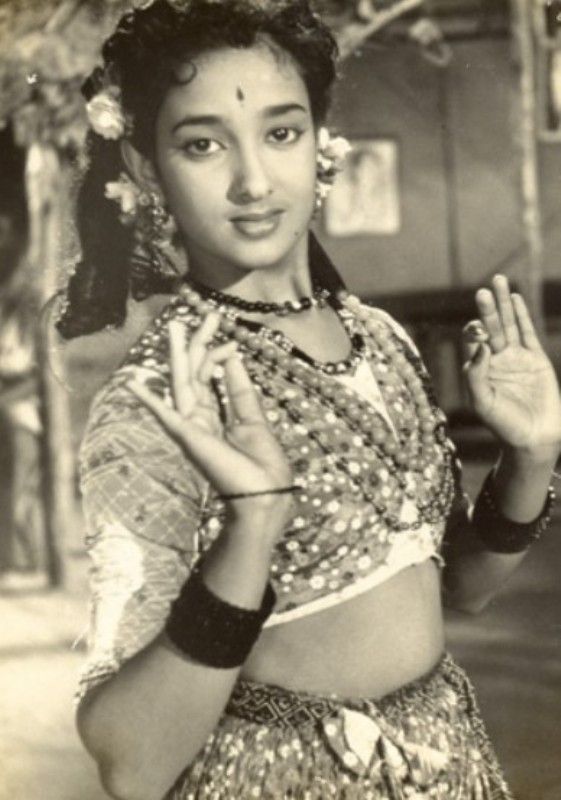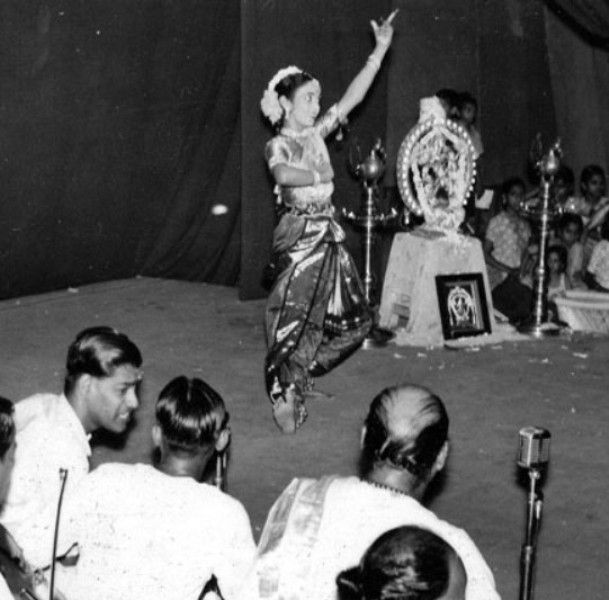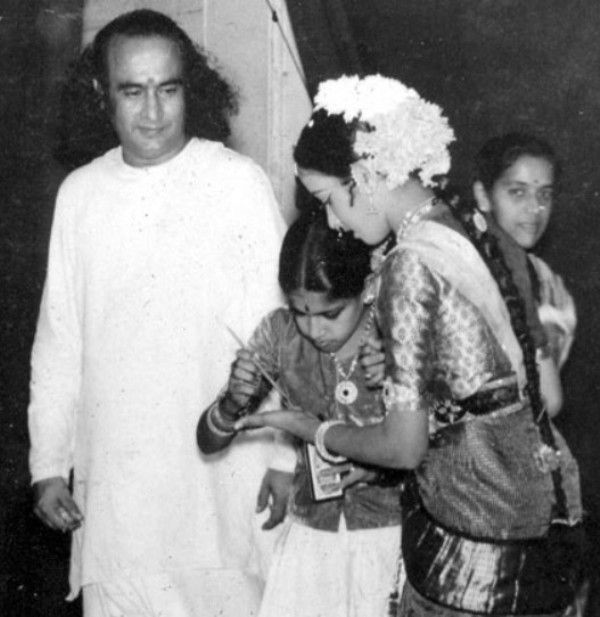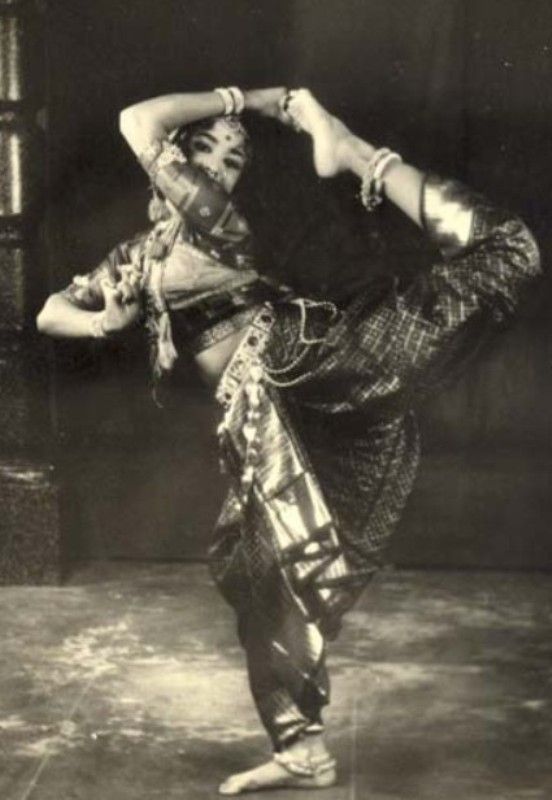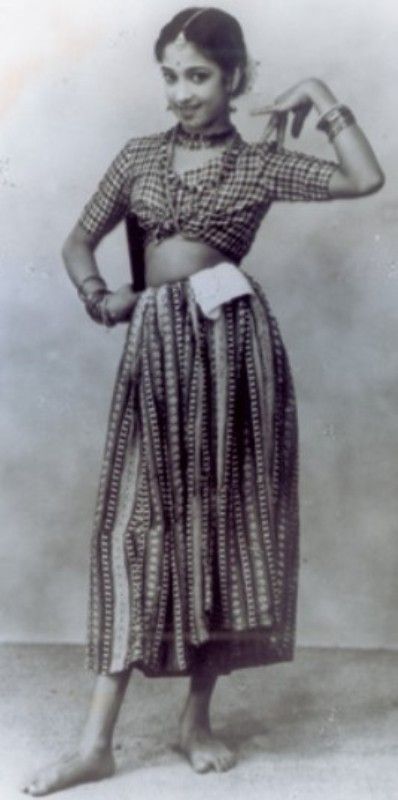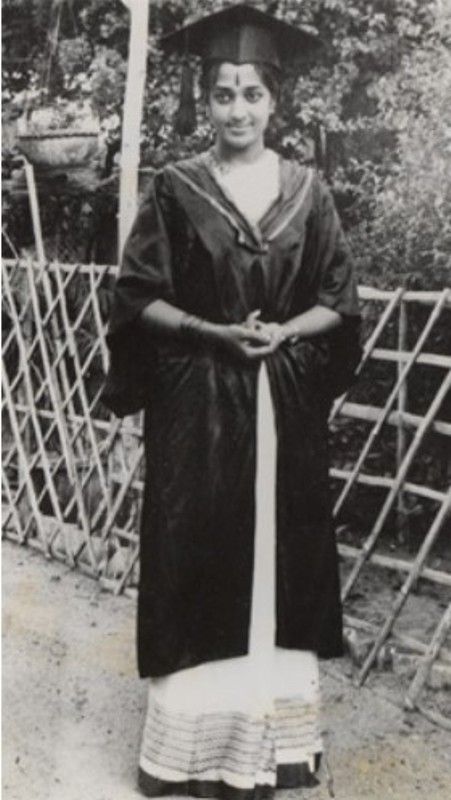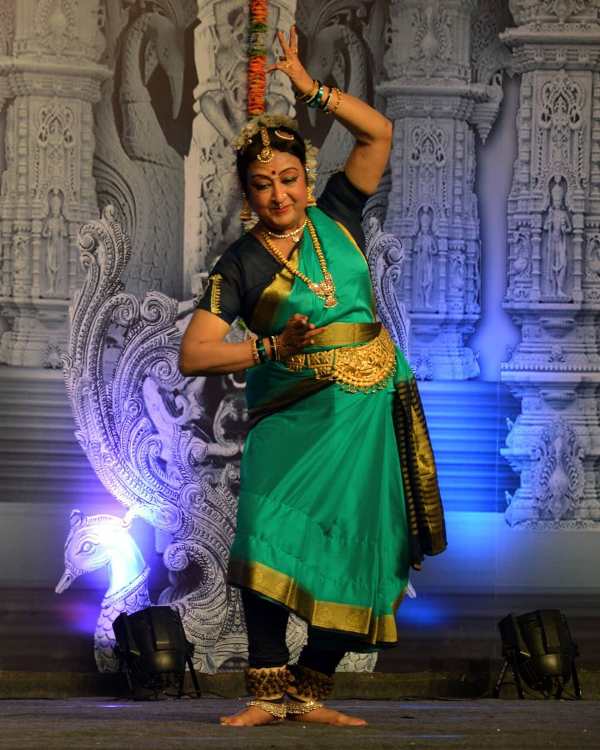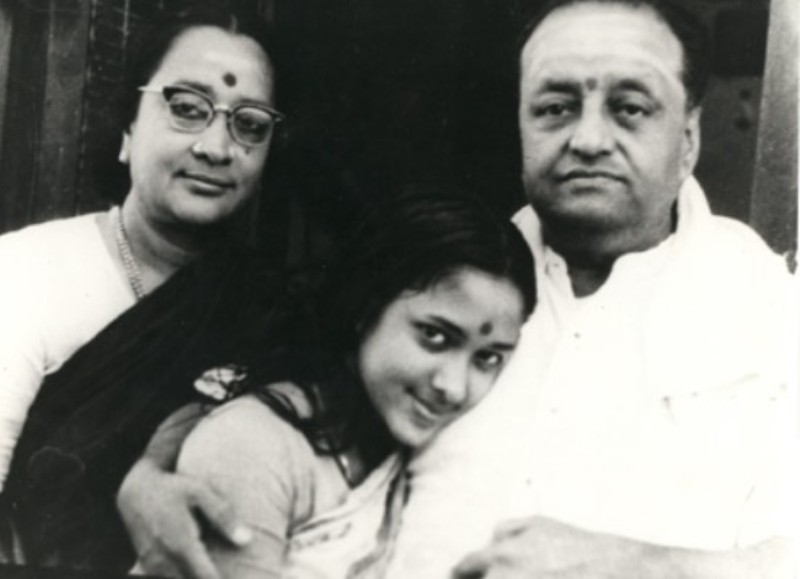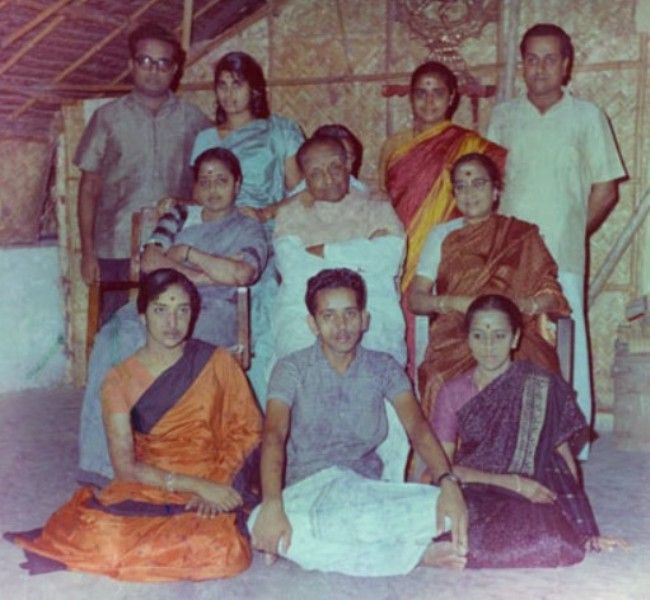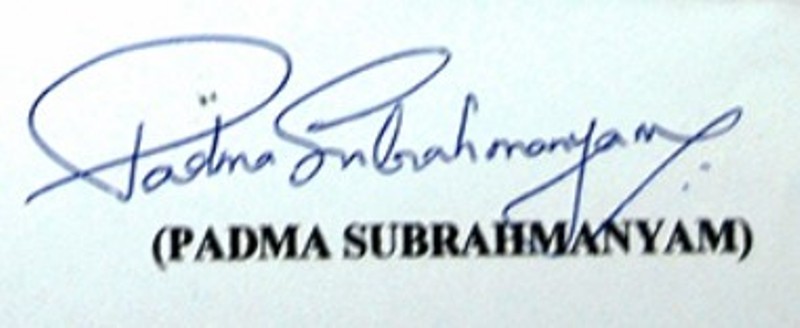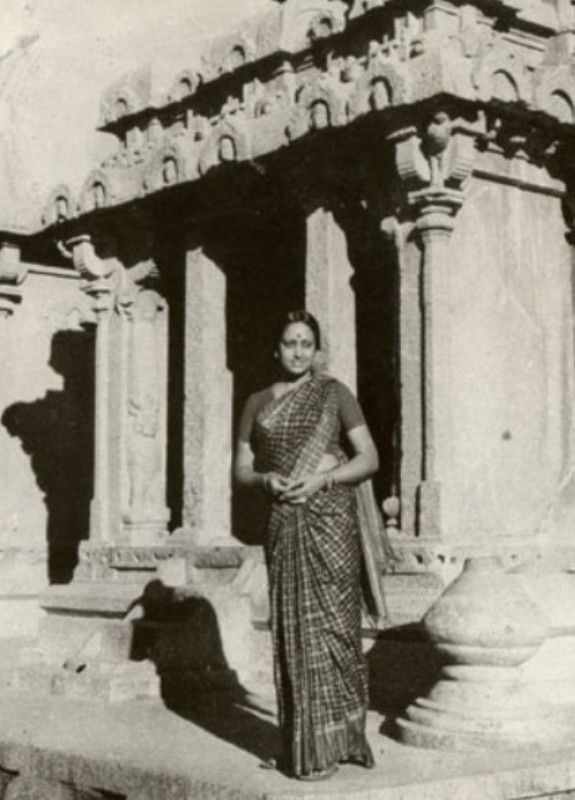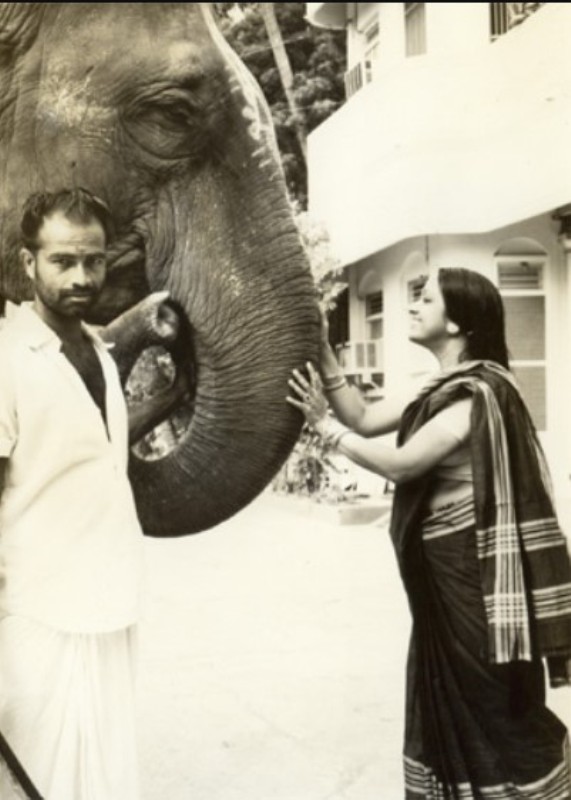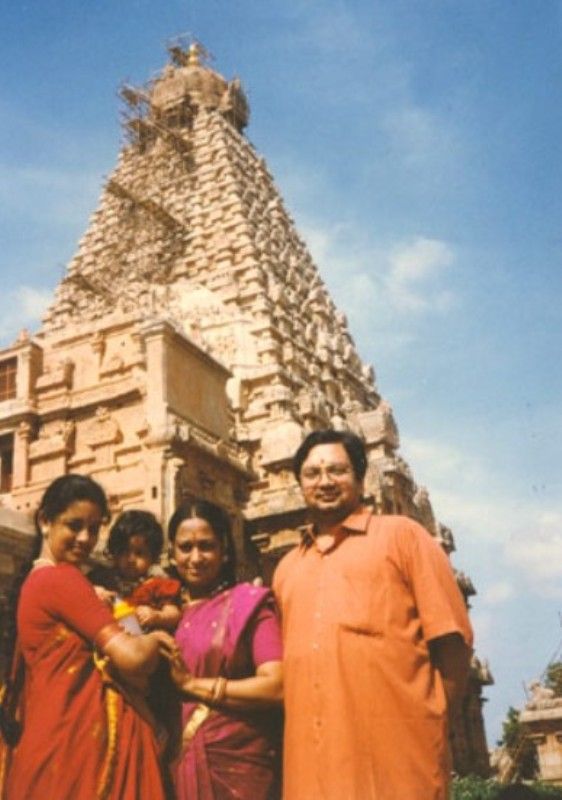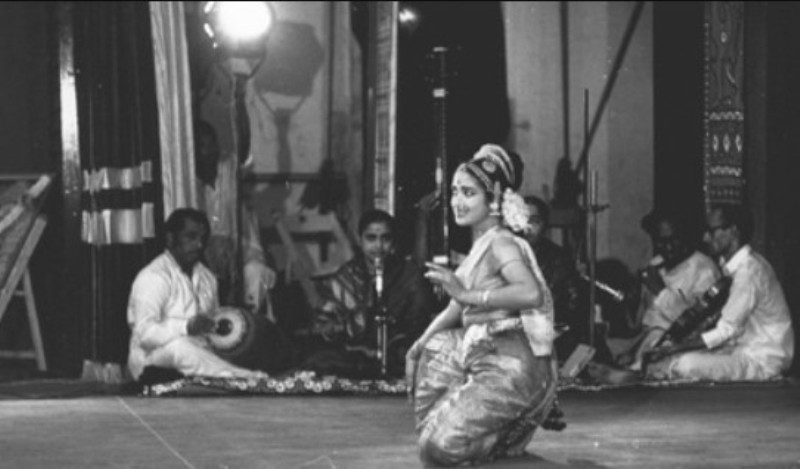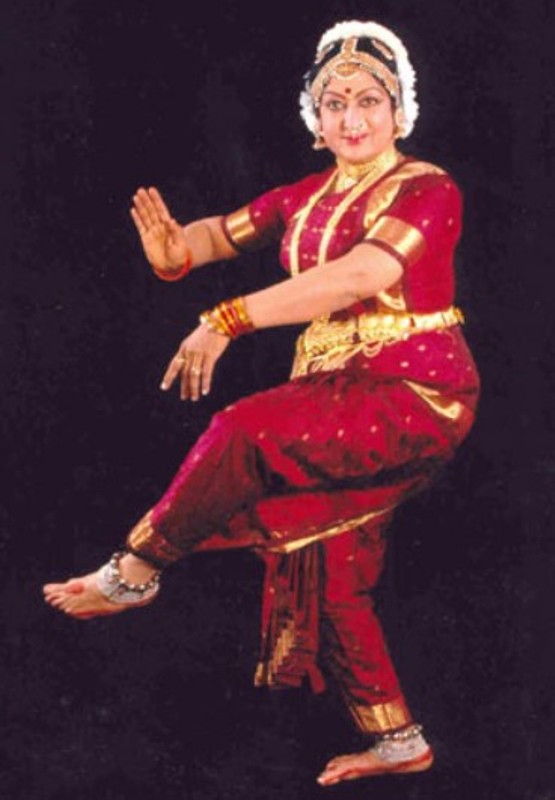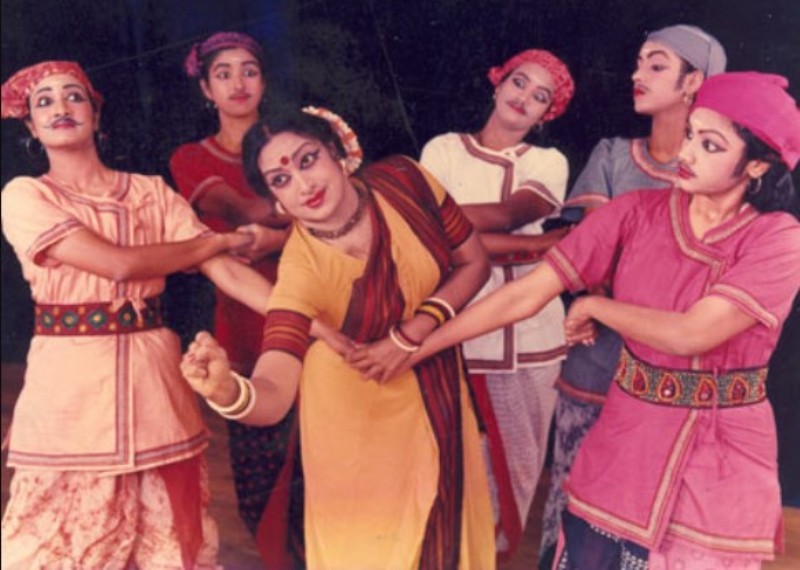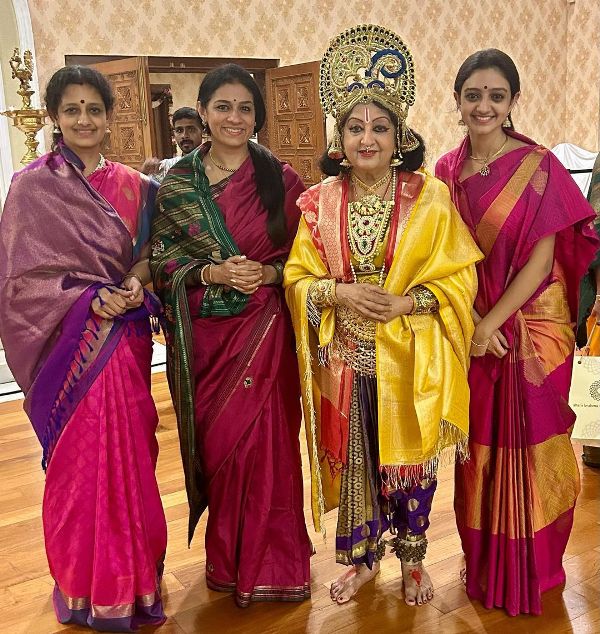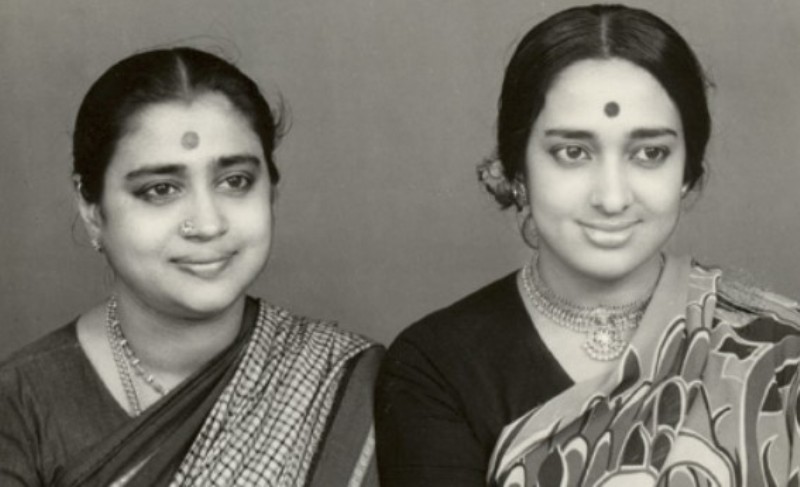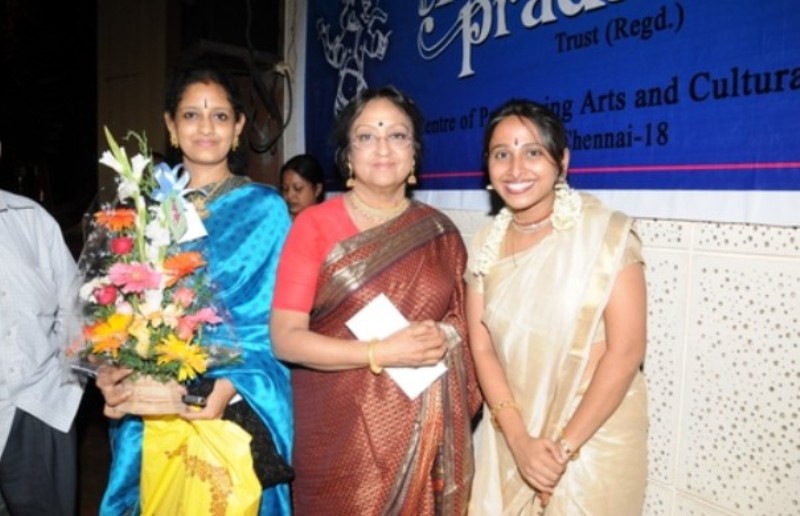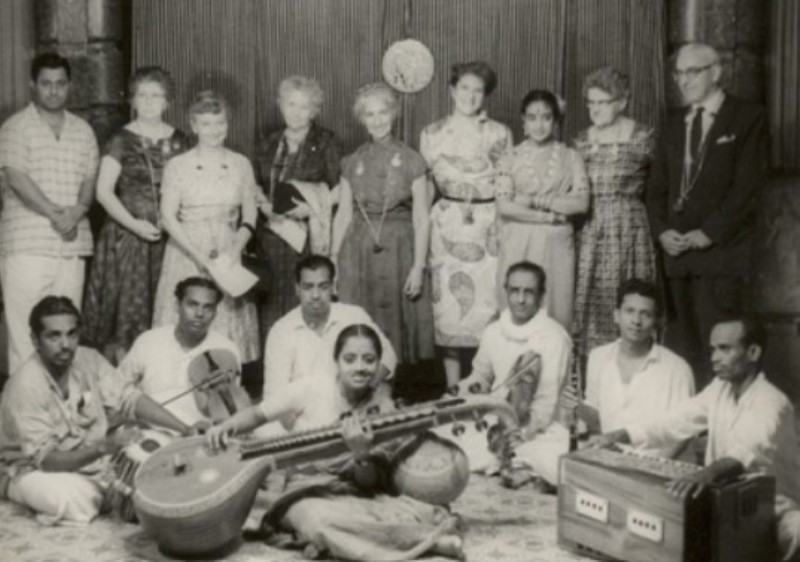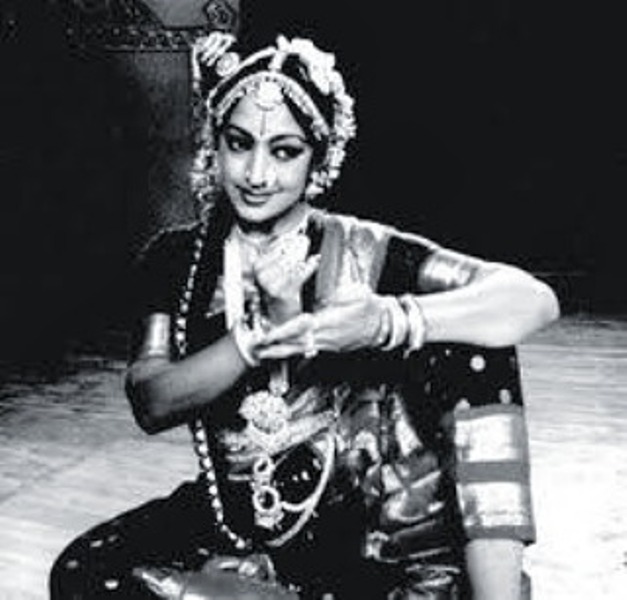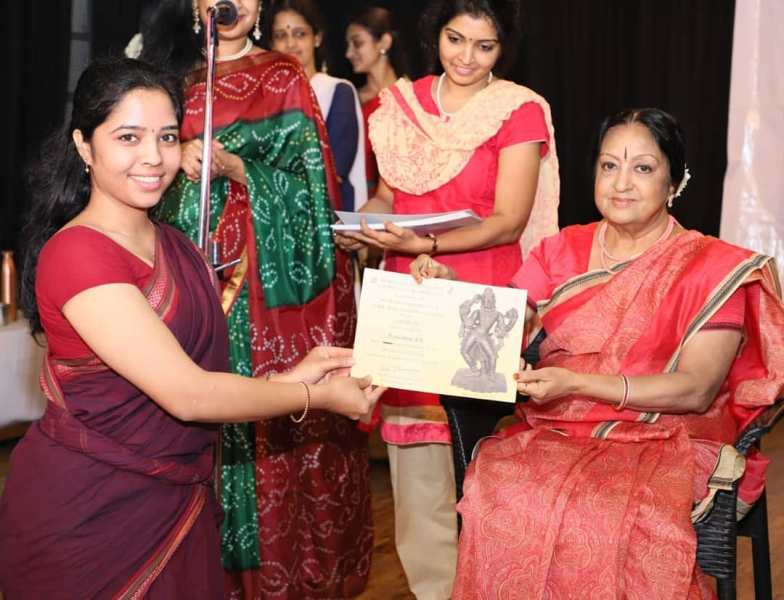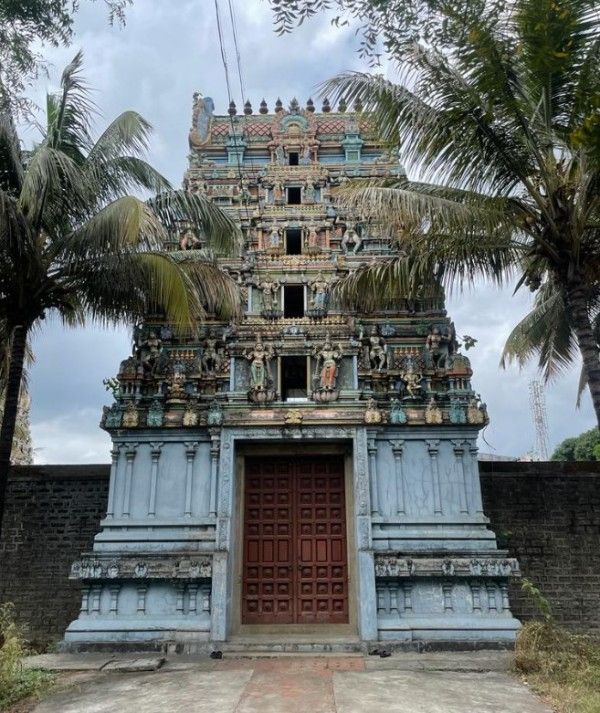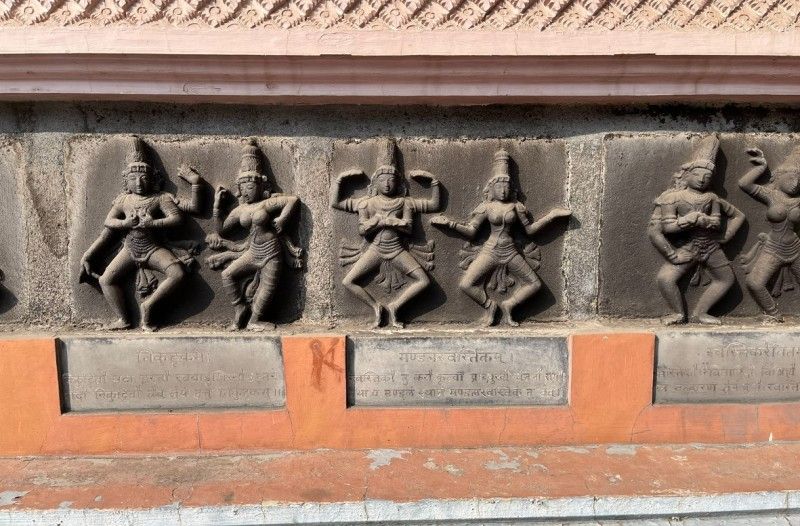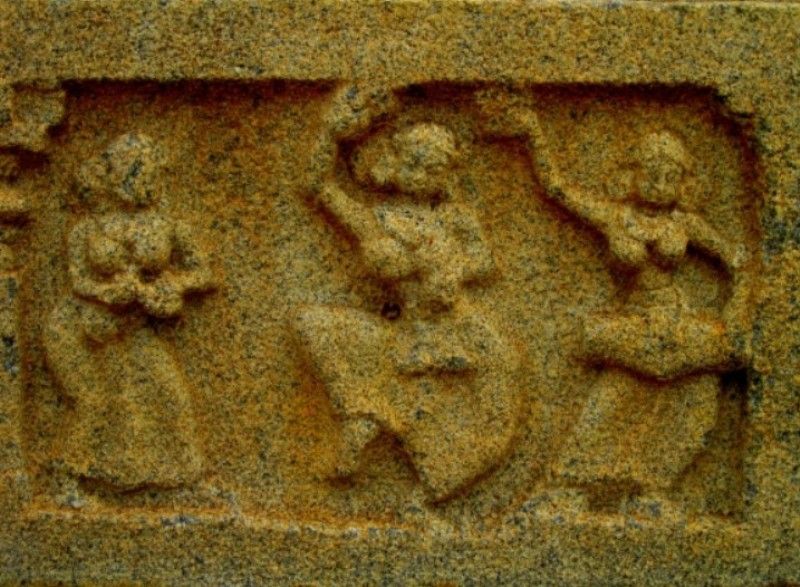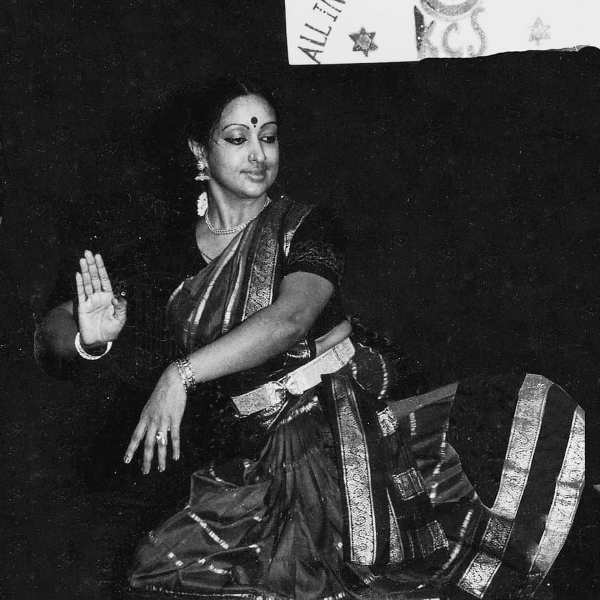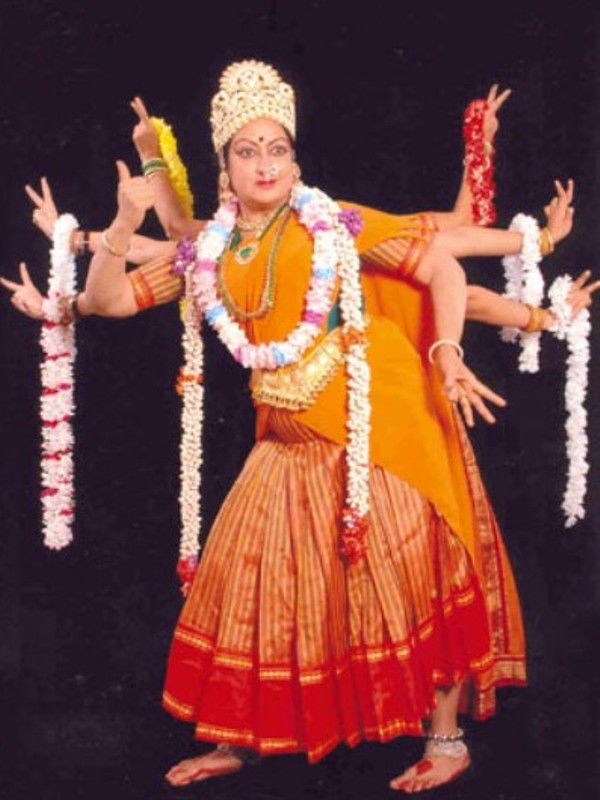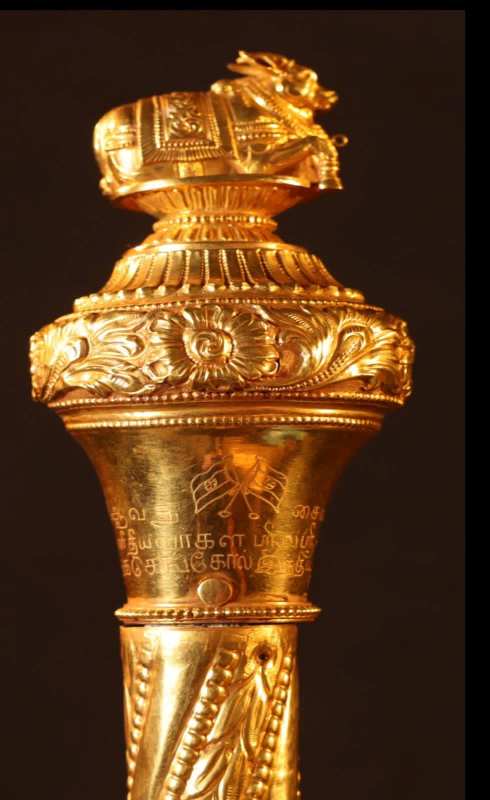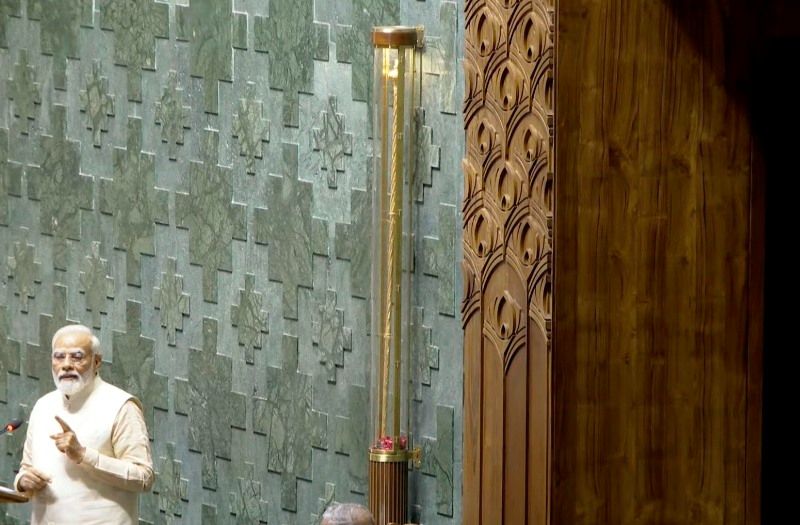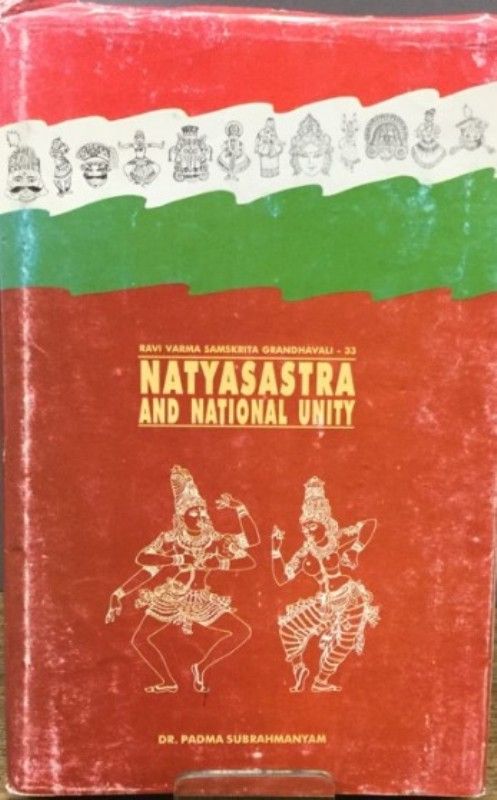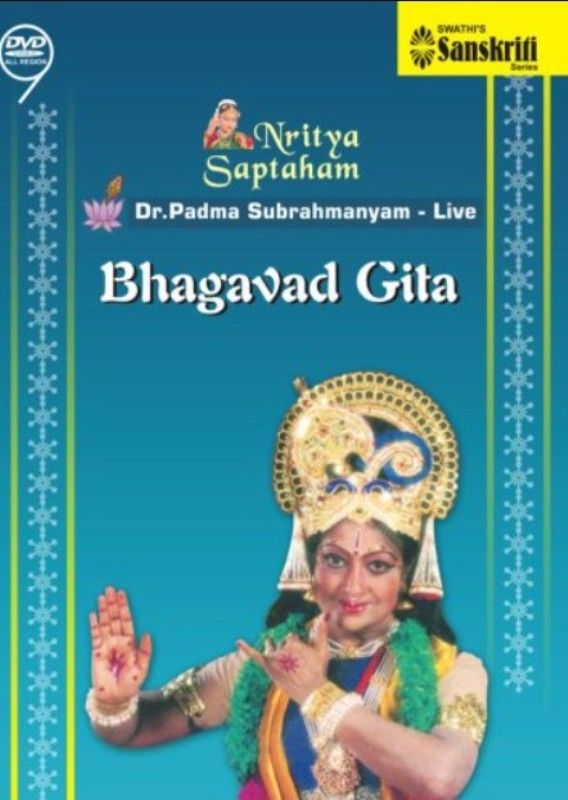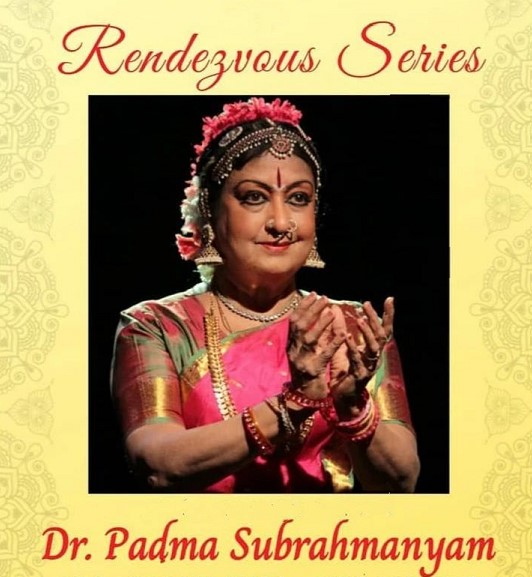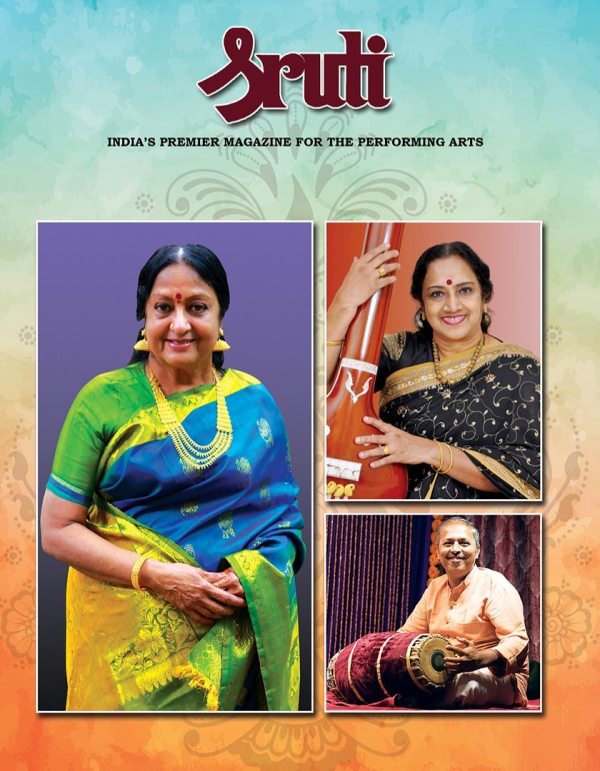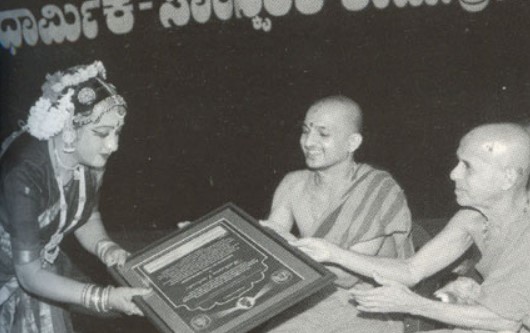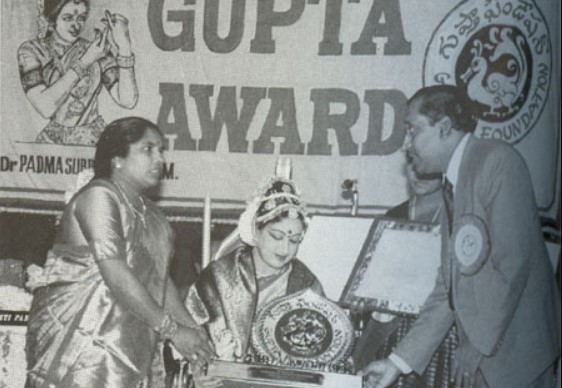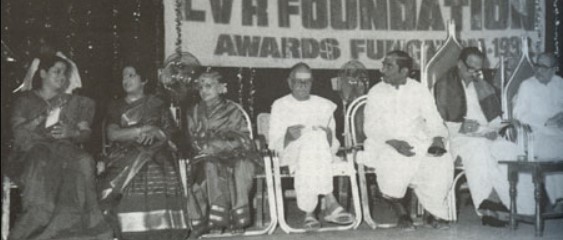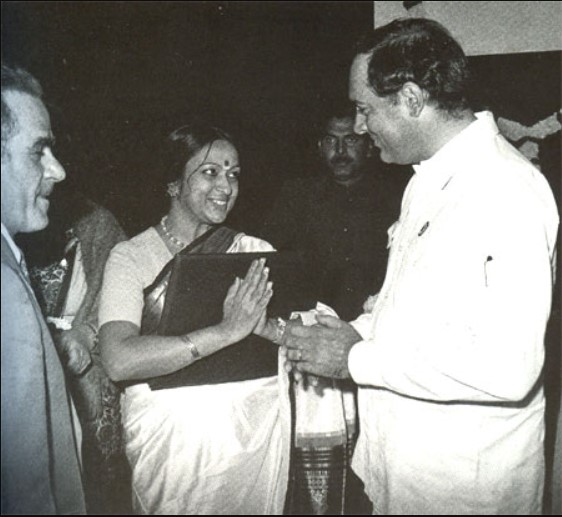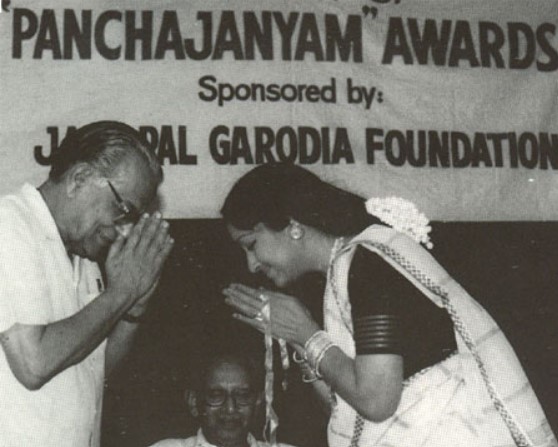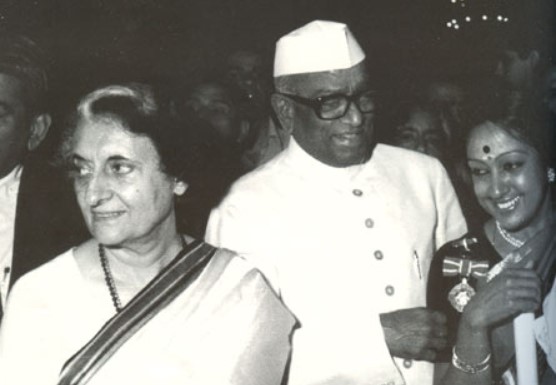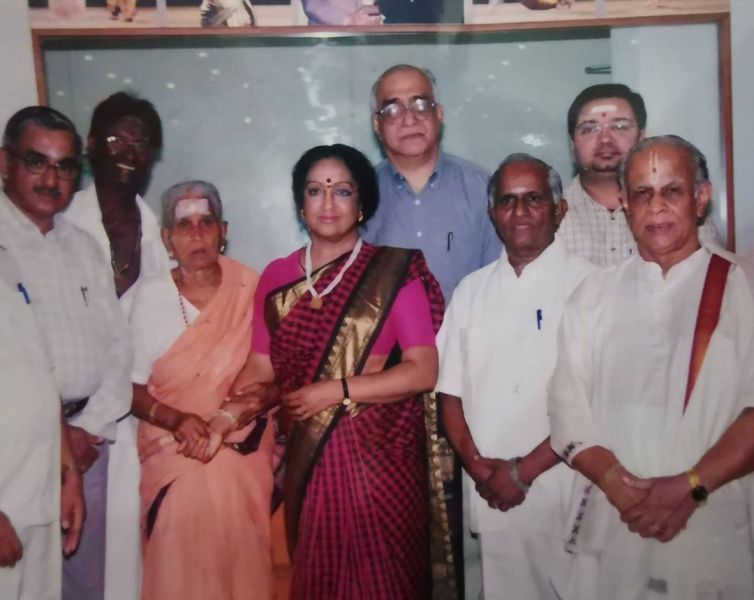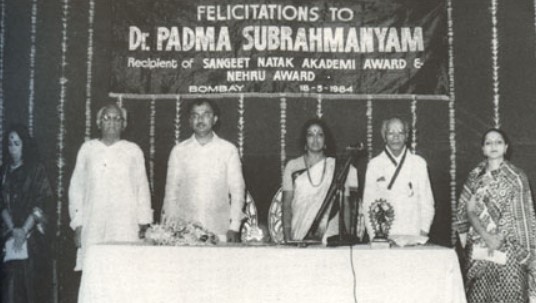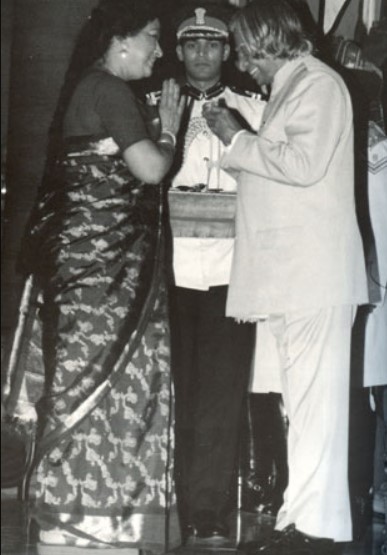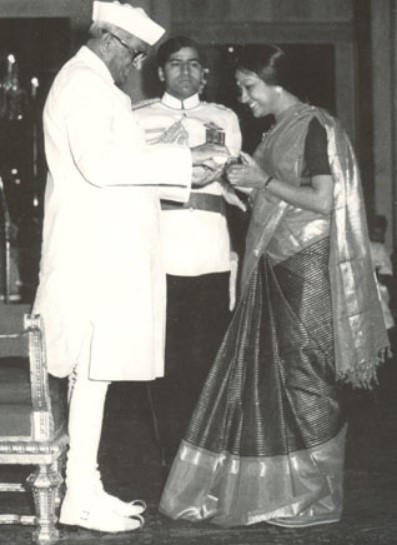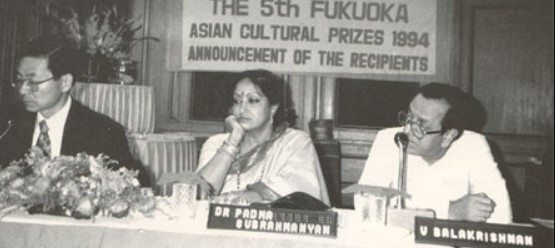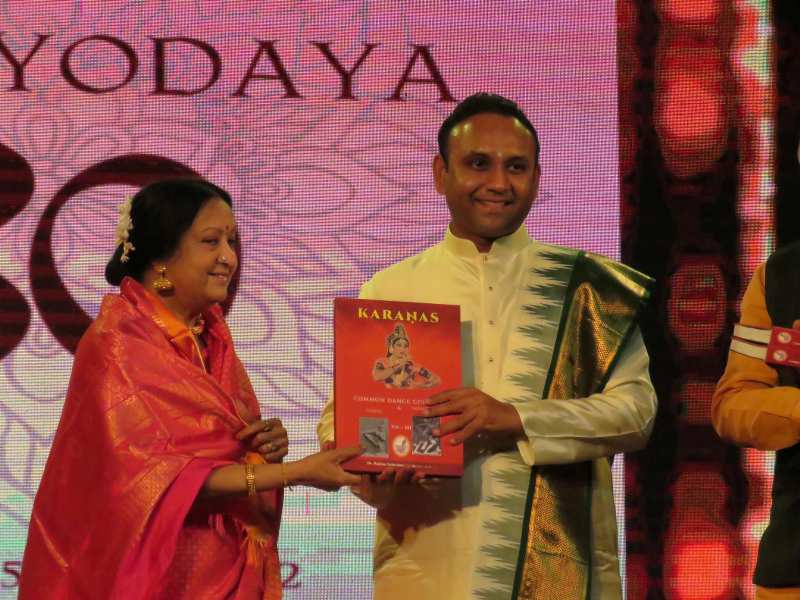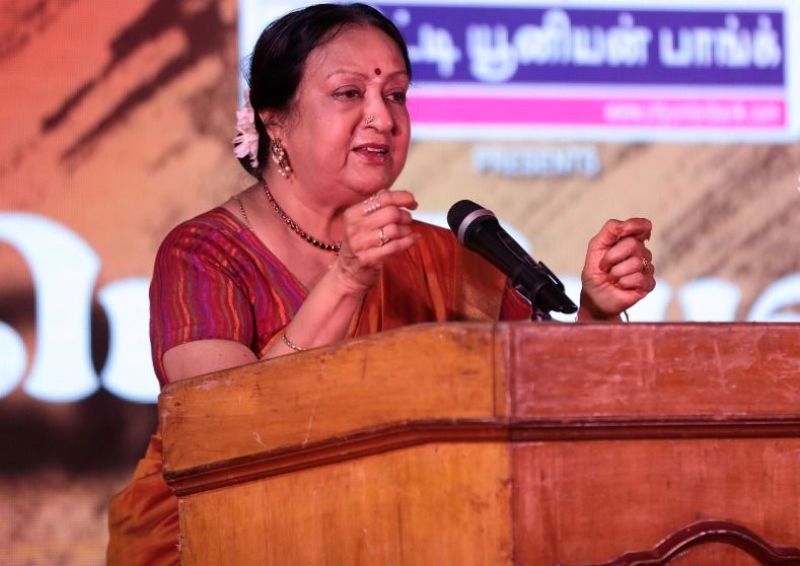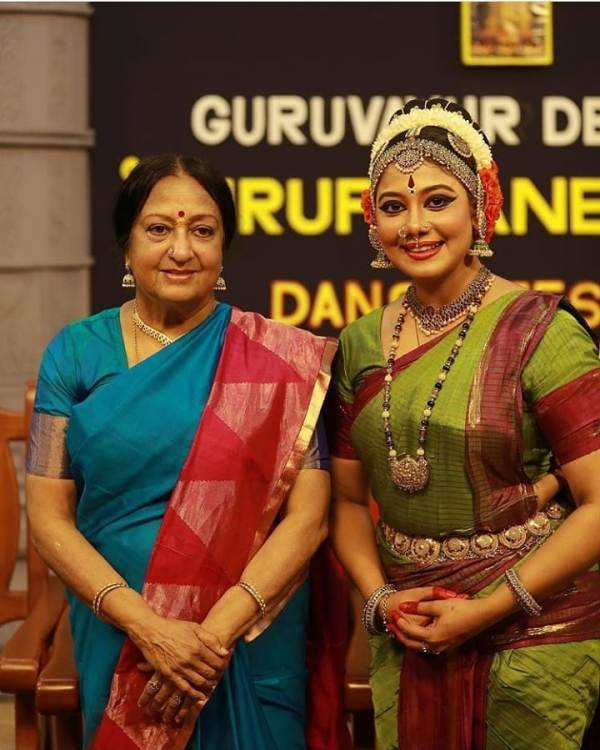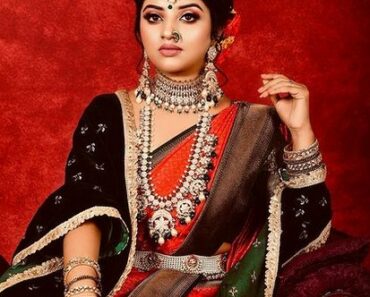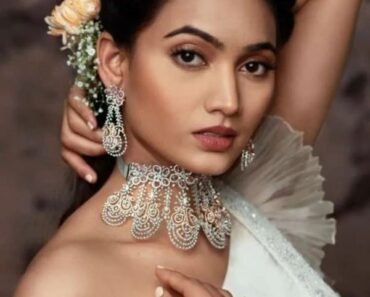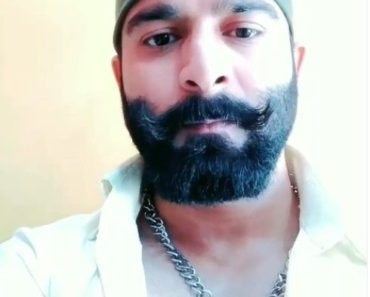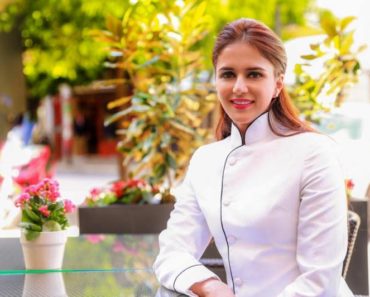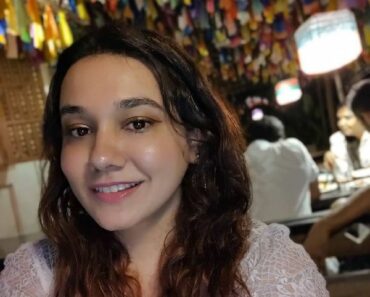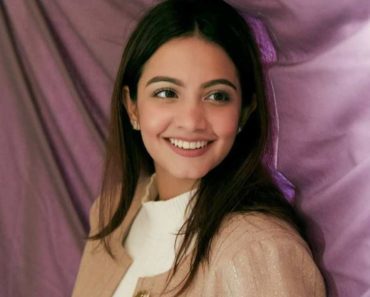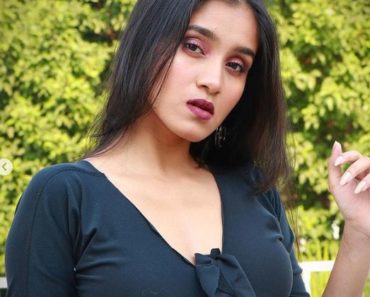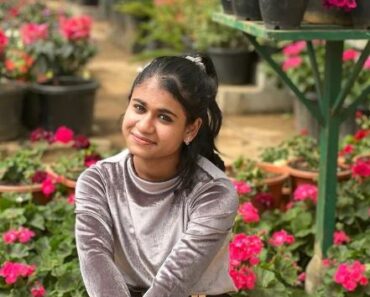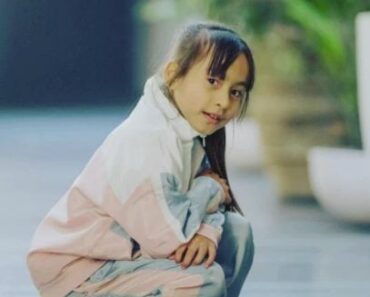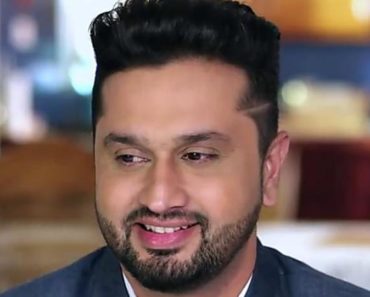Padma Subrahmanyam is an Indian classical dancer, teacher, singer, scholar, author, and choreographer. She is recognized as one of the leading exponents of Bharatanatyam, a classical dance form of South India. She is the founder of the art form Bharata Nrithyam. She is popular in India and abroad and has won many awards. Her letter to the Indian Prime Minister’s Office (PMO) in 2021 led to the establishment of Sengol in the new building of the Indian Parliament.
Contents
Wiki/Biography
Padma Subrahmanyam was born on Thursday, 4 February 1943 (age 80 years; as of 2023) in Chennai, Tamil Nadu, India (then-Madras Presidency, British India). Her zodiac sign is Aquarius. She started learning Bharatanatyam and music at Nrithyodaya Dance School, Chennai under Kausalya.
She later started learning under Guru Vazhuvoor Ramaiah Pillai and gave her debut on-stage performance (Arangetram) in 1956.
She later learnt Adavus (basic/initial steps of Bharatanatyam) under K. N. Dhandayudapani Pillai and Abhinaya (use of expressions) under Gowri Ammal.
She later pursued a Bachelor’s degree in Music, a Master’s degree in Ethnomusicology at Ethiraj College For Women, Chennai, and a Doctorate at Annamalai University, Tamil Nadu with a thesis in 108 Karanas in Indian Dance & Sculpture, mainly Natya Sastra; she did her research under the guidance of Padma Bhushan recipient and noted archaeologist, Dr T.N. Ramachandran. She also learnt music under the classical singer B.V. Lakshmanan and music director Salil Chowdhury.
Physical Appearance
Height (approx.): 5′ 8″
Weight (approx.): 65 kg
Hair Colour: Black
Eye Colour: Black
Family & Caste
She was born into a traditional affluent Hindu Brahmin family. [1]Cinemaazi
Parents & Siblings
Her father, Krishnaswami Subrahmanyam, was a noted director, freedom fighter, and founder of Nrithyodaya Dance School. Her mother, Meenakshi Subrahmanyam, was a music composer, a lyricist in Sanskrit and Tamil and an instrumentalist who played Veena, Violin, and Harmonium.
She has two elder brothers named S. Krishnaswamy and V. Balakrishnan, both of them are film directors.
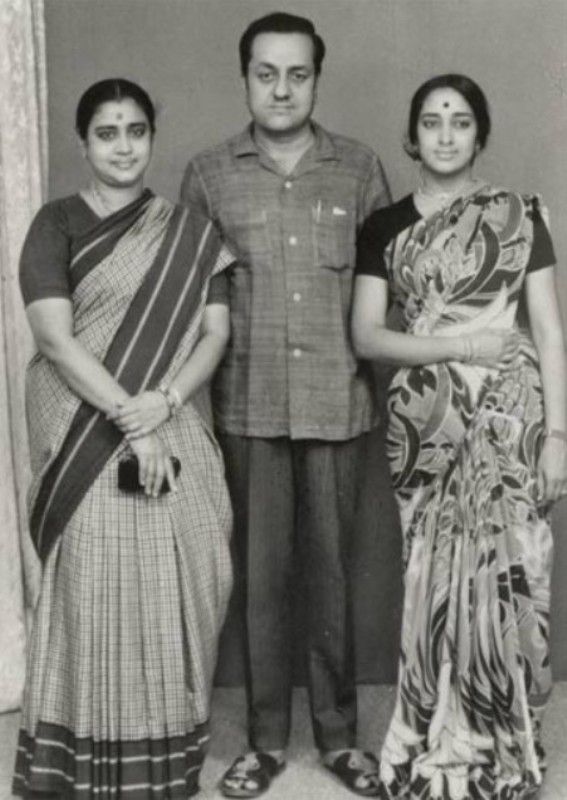
Padma Subrahmanyam (right) with her brother, V. Balakrishnan, and her sister-in-law, Shymala Balakrishnan
Husband & Children
She never married and has no children.
Other Relatives
Her sister-in-law’s names are Shyamala Balakrishnan and Mohana Krishnaswamy. She has two nephews named Raghuram and B. Kannan and two nieces named Lata and Gita. She has two grand-nephews named Hrishikesh and Anirudh Ravichander and a grandniece named Gayathri Raghuram.
Religion
She follows Hinduism.
Signature
108 Karanas of Natya Sastra
Padma Subrahmanyam was assisting her brother Balakrishnan with researching a film about temples when she unexpectedly came across dance sculptures called karanas, which beautifully portray the teachings of the Natya Sastra texts. This discovery sparked her curiosity, leading her on a fascinating journey into the world of dance sculpture.
She eagerly read books written by respected scholars like Ananda Coomaraswamy, T. N. Ramachandran, and C. Sivaramamurti. She focused her research on ‘Karanas in Indian dance and sculpture’ found in the temples of Chidambaram, Thanjavur, and Kumbakonam. Through her diligent research, she learned that the 108 Karanas are not just still poses, but lively movements.
She studied literature, sculptures, and inscriptions, and drew from her own experiences as a dancer to recreate these movements. Padma’s significant work has revealed the unity of all Indian dances as described in the Natya Sastra. She conducts workshops and camps on this topic, and her creative skills extend to designing beautiful hairstyles, costumes, and jewellery that enhance the captivating Karanas.
Music & Choreographer
As an accomplished dancer and choreographer, she has showcased her artistic brilliance through a diverse array of solo and group presentations. These include captivating dance dramas such as Meenakshi Kalyanam, Viralimalai Kuravanji, Valli Kalyanam, Silappadikaram, Krishna Tulabaram, Parijata Aharanam, Nagarukku Appal, Geetanjali, Shyama, Sri Gurave Namaha, Pavai Nombu, and a special performance of Vande Mataram, paying homage to India’s Golden Jubilee of Independence.
Her remarkable creativity lies in her ability to expand the dance technique, employing the entire body to execute graceful leaps, leg extensions, and swift footwork, thereby enhancing intricate rhythms. She has revived the Banika style of mono-acting, presenting enthralling productions such as Krishnaya Tubhyam Namaha, Ramaya Tubhyam Namaha, Jaya Jaya Sankara, and others. Padma’s dedication to her craft has earned her recognition as an esteemed artist in the field of dance.
Singer & Composer
Since her early years, she has displayed a natural talent for singing in various Indian and foreign languages. Together with her sister-in-law Shyamala Balakrishnan, she has contributed to several albums, including ‘Folk Music of Tamilnadu,’ ‘Krishna Tulabharam,’ ‘Nritya Margam,’ ‘Natana Sivanjali,’ and ‘Saivappamalai.’ In a separate album titled ‘Gita Govindam,’ she has beautifully rendered Jayadeva’s Ashtapadis.
She lent her voice to the dance performances of her disciples, and she has sung alongside Dr Gayatri Kannan, her nephew’s wife, as a co-singer.
In addition to creating numerous individual compositions, she has composed the music for most of her productions. Notably, she utilized a multinational orchestra for the music in a couple of dance dramas commissioned by the Singapore Government.
She pioneered the inclusion of Pushpanjali as a dance piece, setting a new precedent in the dance community. She holds the distinction of being the first dancer to adapt a meera bhajan to suit the grammar of Pada Varnam. Padma’s innovation extends to composing the first Bengali Varnam, with lyrics penned by Salil Chaudhry.
Guru/Teacher
Padma started teaching at Nrithyodaya Dance School, Chennai at the age of fourteen and went on to become its Director.
She has evolved a new pedagogy for body training, based on her study of ‘Natya Sastra’ of Bharatamuni. Her disciples get a holistic view of the various aspects of dance art – practical, theoretical, emotional, intellectual and spiritual. She has trained several dancers, teachers as well as musicians for accompanying dance including ‘Nattuvangam’ artists.
Statues at Nataraja Temple, Satara, Maharashtra
Padma received a divine ordination from the revered Centenarian Sage, Pujyasri Chandrasekharendra Saraswati Swamigal (also known as the Sage of Kanchi), the 68th Jagadguru Sankaracharya of Kanchi Kamakoti Peetam. As per his instructions, she undertook the design of a new collection of 108 Karana sculptures of Lord Shiva and Goddess Parvati in black granite for a recently constructed temple of Lord Nataraja in Satara, Maharashtra. These sculptures aimed to capture the movements of the Karanas that were not found in the older temples of Thanjavur, Kumbakonam, and Chidambaram in Tamil Nadu.
Utilizing the twin figures of Shiva and Parvati, she skillfully infused life into each Karana movement. Twelve years later, she encountered a remarkable discovery with the guidance of the Sage of Kanchi. She found about fifty Karana sculptures at the famous Prambanan temple complex in Central Java, Indonesia, dating back to the 9th century AD.
These sculptures not only validated Padma’s practical reconstruction of the Karanas but also exhibited striking similarities to her own designs for the Satara temple. This extraordinary connection transcending time and space has been documented in a book authored by Dr Alessandra, an Italian archaeologist who conducted her Post-Doctoral research under Padma’s guidance, supported by the British Academy in London.
Bharata Nrithyam Artform
Padma holds the distinction of rediscovering the ancient and foundational artistic principles of ‘Marga,’ which was the path established by Sage Bharata. Similar to how Sanskrit coexisted with regional languages, Marga had coexisted with other Indian styles until around five centuries ago. Through her diligent research and exploration, she has successfully revived this Marga technique, which encompasses the entire Indian subcontinent and extends to other Asian regions as well.
Reflecting on her findings, she proudly presents her performances under the banner of ‘Bharata Nrithyam.’ Remarkably, Padma has applied this communication technique and language to choreographing Bharata Nrithyam recitals in various regional languages, including Tamil, Kashmiri, Hindi, Bengali, Oriya, Marathi, Kannada, Telugu, and Malayalam. She has skillfully employed songs from foreign languages to showcase the expressive art of ‘Abhinaya.’
The Sengol Connection
Her name got viral in the country in 2023 when the Indian government decided that Sengol would be handed over to the Indian Prime Minister Narendra Modi during the inauguration of the new Parliament building on 28 May 2023.
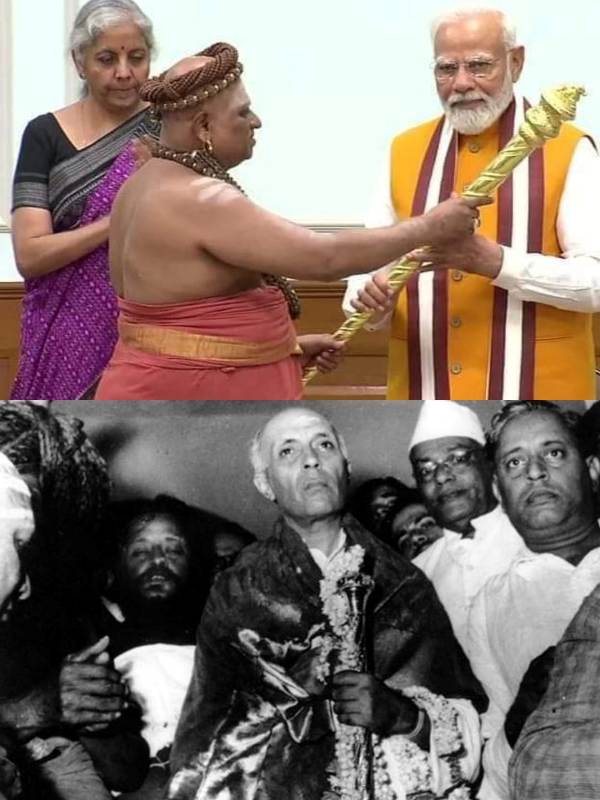
A collage of India’s first Prime Minister Jawaharlal Nehru holding Sengol (below) and Indian Prime Minister Narendra Modi being presented Sengol during the inauguration of the new building of the Indian Parliament
Reportedly, In 2021, she wrote a letter to Prime Minister’s Office (PMO) in which she quoted the article written in the Tamil magazine Thuglak. She translated the article into English and mentioned that when India got its independence in 1947, Sengol was handed over to the first Prime Minister of India, Jawaharlal Nehru.
She also wrote about the details of the small function during which the Sengol was handed over to Nehru. She talked about the article originally published in Tughlaq magazine and said,
It was an article in Tamil that was published in Thuglak magazine. I was very attracted to the content of the article, which was about Sengol. It was about how Chandrasekharendra Saraswati told his disciple Dr Subramaniam about the Sengol (in 1978), who wrote about it in his books. The Sengol, in Tamil culture, has great significance. The umbrella, the Sengol, and the throne are the three objects which actually give you the concept of the reigning power of the king. The Sengol is the symbol of power, of justice. It is not just something that came from 1,000 years ago. It is also mentioned in the Tamil epic, in regards to Chera kings.” [2]India Today [3]India Today
Publications by Padma Subrahmanyam
She has written many research papers, books, and pieces in magazines and newspapers. Her publications include ‘Bharata’s Art: Then & Now,’ ‘Bharatakkalai Kotpadu’ (a Tamil textbook), ‘Natya Sastra & National Unity,’ ‘Kanchi Mahaswami’s Vision of Asian Culture,’ ‘Valluvarum Vedaneriyum,’ ‘Bhagavat Gita for Dance,’ ‘Legacy of a Legend’ (a compilation of her articles),’ ‘Karanas – Common Dance Codes of India & Indonesia’ (3 volumes), and children’s books such as ‘Epic Stories from Natya Sastra’ and ‘Natya Sastra Itihasa Kadhaigal’ (in Tamil). She also wrote the script, composed music, and starred in the telefilm Bharatiya Natya Sastra.
Publications in her Tribute
Padma’s life and contributions are beautifully captured in the Tamil biography ‘Padma Subrahmanyam Oru Sagaptam’ written by Sundari Santhanam. Additionally, Chamundeswari has explored her remarkable journey and impact in the field of dance through her Master’s Degree dissertation in Sociology. Her extraordinary talent and achievements have been recognized globally through various film productions.
‘Queen of Dance’ is a film produced by Russia, while ‘Padma’ has been produced by Film Australia and the Films Division of the Government of India. Additionally, NHK, Japan has created a film about her as part of their prestigious ‘Asia’s Who is Who’ series, showcasing her contributions to the world of dance. Dr Christopher Byrski, formerly of Warsaw University, Poland, and later the Ambassador of Poland in India, has paid tribute to Dr Padma by dedicating his research publication titled ‘Concept of Ancient Indian Theatre’ to her.
Awards, Honours, Achievements
- Bharatiyar Award by Vaanavil Panpaattu Maiyam on 12 December 2010
- Lifetime Achievement Award by Nungambakkam Cultural Academy on 5 December 2010
- Felicitation at the International Film Festival India (IFFI) at Goa on 27 November 2010
- Honorary Fellowship by The Asiatic Society of Mumbai on 26 November 2010
- Arsha Kala Bhushanam by Pujyasri Swami Dayananda Saraswati on 7 November 2010
- Honorary Doctor of Letters (D.Litt) by SASTRA University, Thanjavur
- Padma Sadhana by Padma Sarangapani Cultural Academy, Chennai
- Nritya Kovidha by Naadabrahmam, Chennai
- Zee Astitva Life Time Achievement Award by Zee TV & Archana Trust, Mumbai (Maharashtra)
- Melvin Jones Award by Lions Club of Madras Melvin Jones
- National Eminence Award by Sri Shanmukhananda Sangeetha Sabha, Mumbai (Maharashtra)
- Natya Vidya Nidhi by Andhra Music Academy, Secunderabad (Andhra Pradesh)
- Honorary Doctorate by Open University for Alternative Medicine, Kolkata (West Bengal)
- Ojaswini Award by Ojaswini Magazine, Bhopal (Madhya Pradesh)
- Satabdhi Nartaki at a felicitation function in Mumbai (Maharashtra)
- Chowdiah Award by Academy of Fine Arts, Bangalore (Karnataka)
- Nritya Kalasagara by Kalasagaram, Secunderabad (Andhra Pradesh)
- Pragna Puraskar by Pragna Bharati, Hyderabad (Andhra Pradesh)
- Gupta Award by Gupta Foundation, Eluru (Andhra Pradesh)
- LVR Award by LVR Foundation, Chennai
- Ugadi Puraskar by Madras Telugu Academy
- Kamban Adippodi Memorial Award by Kamban Kazhagam, Chennai
- Sivaji Ganesan Memorial Award by Ganesan’s family
- Lifetime Achievement Award by Rotary Club of Chennai Galaxy
- Significant Achievement Award by Rotary Club of Coimbatore Mid Town
- Vocational Excellence Award by Rotary Club of Trichy
- For the Sake of Honour Award by the Rotary Club of Madras
- Soviet Land Nehru Award by Soviet Land Magazine in 1983
- Silver Jubilee Award of Excellence by Tamil Nadu Brahmin Association
- Bharata Kala Sagara by Shree Bharatalaya, Chennai
- Tirumurai Nandana Perarasi by Sekkizhar Mandram, Chennai
- Bharatakkalaiarasi by Narada Gana Sabha, Karur
- Silver Jubilee Award by Soorya, Trivandrum (for performing in their festival for 25 years)
- Natya Kala Sarathy by Sri Parthasarathy Swami Sabha, Chennai
- Award of Excellence by Mudhra, Chennai
- Viswa Kala Bharati by Bharat Kalachar, Chennai
- Vani Kala Sudhakara at Sri Thyaga Brahma Gana Sabha, Chennai
- Natya Padmam by Brahma Gana Sabha, Chennai
- Nada Brahmam by Narada Gana Sabha, Chennai
- Isai Perarignar by Tamil Isai Sangam, Chennai
- Sangeeta Kala Nipuna by Mylapore Fine Arts Club, Chennai
- Nritya Kala Siromani by Nungambakkam Cultural Academy, Chennai
- Nritya Choodamani by Sri Krishna Gana Sabha, Chennai
- Rajiv Gandhi National Integration Award by Indian Bank & Idhayam Publications
- Honorary Fellowship by The Academy of General Education, Manipal University
- Kshetra Natyasri Award by Ksetropasana (Prof. Prema Pandurang)
- Asthana Vidushi by Sri Krishna Temple, Udupi (first lady recipient in the 765-year-old history of the temple)
- Asthana Vidushi by Sri Ananthapadmanabhaswami Temple, Chennai
- Thalaikkol Arivai by Kunrakkudi Adeenam
- Natya Kalanidhi by Dharmapuram Adeenam
- Sri Mata Award by Jagadguru Sankaracharya of Sri Ramachandrapura Matha, Karnataka
- Bharata Sastra Rakshamani by Jagadguru Shankaracharya of Kanchi Kamakoti Peetam
- Kalidas Samman by Government of Madhya Pradesh
- State Artistes Award by the Government of Tamil Nadu
- Kalaimamani by the Government of Tamil Nadu
- Sangeet Natak Akademi Award by Natak Akademi, New Delhi
- Padma Bhushan by the President of India in 2003
- Padma Shri by the President of India in 1981
- Fukuoka Asian Cultural Prize by Fukuoka, Japan (Dr Padma is the first dancer in the world to receive this prestigious award for ‘her contribution to development and harmony in Asia’)
- Kambarasa Nartana Vilasa Vittagi by Colombo Kamban Kazhagam, Srilanka
- K. M. Munshi Centenary & Bhavan’s Golden Jubilee Award by Bharatiya Vidya Bhavan, London, UK
- Award of Excellence by New York Tamil Sangam, USA
- Natya Ratnakara by India Fine Arts, Austin, USA
- Nritya Jyoti by Austin Tamil Sangam, USA
- Nritya Ratnakara by Bhairavi Indian Fine Arts Society, Cleveland, USA
- Lifetime Achievement Award by Kalanidhi Fine Arts, Toronto, Canada
- Lifetime Achievement Award by Soorya, Singapore Chapter
- Padma Vibhushan, the second-highest civilian award, received in 2024
- Served as a member of the Indo-US Sub-Commission for Education and Culture
- Served as a member of the General Council of the Indian Council for Cultural Relations (ICCR)
- Served as a member of the Executive Committee of Sangeet Natak Akademi, New Delhi
- Served as a member of the General Council of Sangeet Natak Akademi, New Delhi
- Served as a member of the Executive Committee of Tamilnadu Eyal Isai Nataka Mandram, Chennai
- Served as a member of the Advisory Committee for Doordarshan, Chennai
- Served as a member of the National Committee to celebrate the 40th Anniversary of Indian Independence & Jawaharlal Nehru’s Birth Centenary
- Served as a member of the National Committee to celebrate the Golden Jubilee of Indian Independence
- Served as a member of the National Committee to celebrate the Golden Jubilee of the Indian Republic
- Served as a member of Several Expert Committees of the Ministry of Culture, Govt. of India
- Served as a member of the Academic Council of Indira Gandhi National Centre for the Arts (IGNCA), New Delhi
- Served as a member of the Academic Council of IGNCA, Southern Regional Centre, Bangalore
- Served as a member of the Indian National Commission for Co-operation with UNESCO
- Served as a member of the Board of Kalakshetra Foundation, Chennai
- Served as President of the Association of Bharatanatyam Artistes of India (ABHAI)
- Served as Trustee of Indira Gandhi National Centre for the Arts (IGNCA), New Delhi
References
| ↑1 | Cinemaazi |
|---|---|
| ↑2 | India Today |
| ↑3 | India Today |

